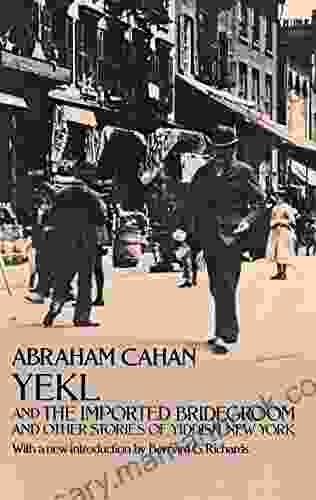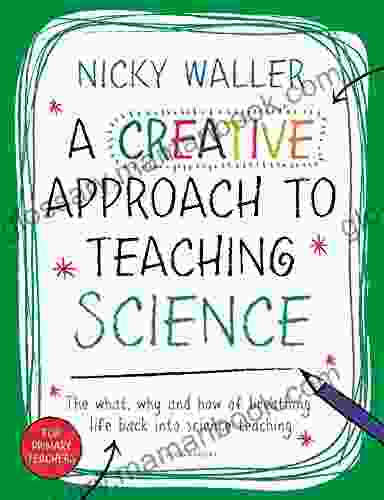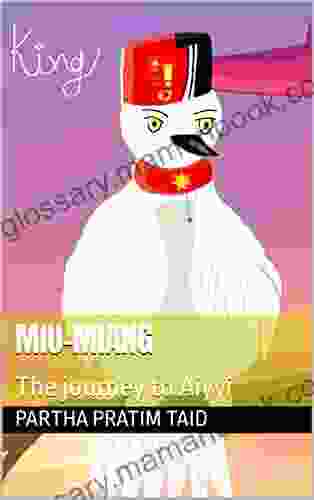Innovative Approaches to Teaching Science: Unleashing the Potential of Young Minds

Science education plays a pivotal role in shaping the future of young minds. It not only imparts knowledge about the natural world but also fosters critical thinking, problem-solving skills, and a lifelong love of learning. Traditional approaches to science teaching, however, often fall short of engaging students and igniting their passion for the subject. This is where creative and innovative approaches to teaching science come into play.
4.7 out of 5
| Language | : | English |
| File size | : | 2450 KB |
| Text-to-Speech | : | Enabled |
| Screen Reader | : | Supported |
| Enhanced typesetting | : | Enabled |
| Word Wise | : | Enabled |
| Print length | : | 321 pages |
Benefits of Creative Science Teaching
Incorporating creativity into science teaching offers numerous benefits for students, including:
- Increased engagement and motivation: Creative activities make learning more enjoyable, stimulating students' curiosity and enthusiasm for science.
- Enhanced understanding: Hands-on experiments, simulations, and interactive demonstrations help students grasp complex concepts more effectively.
- Improved critical thinking and problem-solving skills: Creative projects encourage students to think outside the box, analyze data, and develop solutions to real-world problems.
- Development of scientific literacy: Engaging students in discussions and research projects fosters their ability to communicate scientific ideas clearly and effectively.
- Cultivation of a lifelong love of learning: Creative science teaching inspires students to explore the world around them and pursue further studies in STEM fields.
Innovative Approaches to Teaching Science
There are countless ways to incorporate creativity into science teaching. Here are a few innovative approaches that have proven effective:
1. Hands-On Experiments
Nothing beats hands-on experiments when it comes to igniting students' interest in science. By allowing students to actively participate in the learning process, experiments provide a tangible and engaging way to explore scientific concepts. For example, instead of simply teaching about the properties of light, students could conduct experiments with lenses, mirrors, and prisms to observe how light interacts with different materials.
2. Project-Based Learning
Project-based learning is another highly effective way to engage students in science. By working on projects that require them to apply scientific knowledge and skills to real-world problems, students develop a deeper understanding of the subject matter. For example, students could design and build a prototype of a renewable energy device or investigate the environmental impact of a local industry.
3. Real-World Applications
Connecting science to the real world helps students see the relevance of what they are learning. Field trips, guest speakers, and industry partnerships can provide students with hands-on experiences and insights into how science is applied in different careers. For example, students could visit a local research laboratory or attend a lecture by a scientist working in the field of their interest.
4. Technology Integration
Technology can be a powerful tool for enhancing science education. Simulations, virtual reality, and data analysis tools can make abstract concepts more accessible and allow students to explore science in new and exciting ways. For example, students could use a simulation to model the motion of planets or analyze data from a real-world experiment.
5. Cross-Curricular Connections
Integrating science with other subjects, such as math, language arts, and history, can make learning more meaningful and engaging. For example, students could use math to solve science problems, write essays about scientific discoveries, or learn about the history of scientific thought.
By embracing creative and innovative approaches to teaching science, educators can unlock the potential of young minds and ignite a lifelong passion for the subject. Hands-on experiments, project-based learning, real-world applications, technology integration, and cross-curricular connections are just a few of the many ways to make science education more engaging, effective, and inspiring.
As we continue to navigate the 21st century, it is essential that we prepare our students to meet the challenges and opportunities of an increasingly science-driven world. By investing in creative science teaching, we are investing in the future of our planet and the well-being of our children.
4.7 out of 5
| Language | : | English |
| File size | : | 2450 KB |
| Text-to-Speech | : | Enabled |
| Screen Reader | : | Supported |
| Enhanced typesetting | : | Enabled |
| Word Wise | : | Enabled |
| Print length | : | 321 pages |
Do you want to contribute by writing guest posts on this blog?
Please contact us and send us a resume of previous articles that you have written.
 Top Book
Top Book Novel
Novel Fiction
Fiction Nonfiction
Nonfiction Literature
Literature Paperback
Paperback Hardcover
Hardcover E-book
E-book Audiobook
Audiobook Bestseller
Bestseller Classic
Classic Mystery
Mystery Thriller
Thriller Romance
Romance Fantasy
Fantasy Science Fiction
Science Fiction Biography
Biography Memoir
Memoir Autobiography
Autobiography Poetry
Poetry Drama
Drama Historical Fiction
Historical Fiction Self-help
Self-help Young Adult
Young Adult Childrens Books
Childrens Books Graphic Novel
Graphic Novel Anthology
Anthology Series
Series Encyclopedia
Encyclopedia Reference
Reference Guidebook
Guidebook Textbook
Textbook Workbook
Workbook Journal
Journal Diary
Diary Manuscript
Manuscript Folio
Folio Pulp Fiction
Pulp Fiction Short Stories
Short Stories Fairy Tales
Fairy Tales Fables
Fables Mythology
Mythology Philosophy
Philosophy Religion
Religion Spirituality
Spirituality Essays
Essays Critique
Critique Commentary
Commentary Glossary
Glossary Bibliography
Bibliography Index
Index Table of Contents
Table of Contents Preface
Preface Introduction
Introduction Foreword
Foreword Afterword
Afterword Appendices
Appendices Annotations
Annotations Footnotes
Footnotes Epilogue
Epilogue Prologue
Prologue Sugata Mitra
Sugata Mitra Jude Welton
Jude Welton Peyton Price
Peyton Price Lisa Renee Jones
Lisa Renee Jones Amisha Dodhia Gurbani
Amisha Dodhia Gurbani Michael Penny
Michael Penny Abolqasem Ferdowsi
Abolqasem Ferdowsi Michelle Halket
Michelle Halket D C Adams
D C Adams Clive James
Clive James Avianna Lemonier
Avianna Lemonier Marius Gabriel
Marius Gabriel Anna Byrne
Anna Byrne Gordon L Clark
Gordon L Clark Jason Mclean
Jason Mclean Brian Holmes
Brian Holmes J J Green
J J Green Ray Bears
Ray Bears Sidney Sheldon
Sidney Sheldon Tony Bramley
Tony Bramley
Light bulbAdvertise smarter! Our strategic ad space ensures maximum exposure. Reserve your spot today!

 Tennessee WilliamsUnveiling the Enchanting World of Reckoning Tide by Anneli Purchase: A...
Tennessee WilliamsUnveiling the Enchanting World of Reckoning Tide by Anneli Purchase: A...
 Edward ReedThe Drive to Compete: An Exploration of the Psychological and Physiological...
Edward ReedThe Drive to Compete: An Exploration of the Psychological and Physiological... Henry David ThoreauFollow ·10.4k
Henry David ThoreauFollow ·10.4k Elmer PowellFollow ·16.8k
Elmer PowellFollow ·16.8k Beau CarterFollow ·3.8k
Beau CarterFollow ·3.8k Gene SimmonsFollow ·6.9k
Gene SimmonsFollow ·6.9k Evan HayesFollow ·10.9k
Evan HayesFollow ·10.9k Mitch FosterFollow ·3.2k
Mitch FosterFollow ·3.2k William PowellFollow ·5k
William PowellFollow ·5k Ed CooperFollow ·14.4k
Ed CooperFollow ·14.4k

 Cody Blair
Cody BlairWill You Ever Pee Alone Again? The Future of Bathroom...
The bathroom has long been a place of...

 Al Foster
Al FosterNine Years Among the Indians 1870-1879: Witnessing Their...
In the annals of American...

 Pete Blair
Pete BlairYekl and the Imported Bridegroom: A Window into the New...
Abraham Cahan's Yekl and the...

 Pablo Neruda
Pablo NerudaSearch Engine Optimization Guide: A Non-Technical...
In today's digital landscape, having a...

 Nikolai Gogol
Nikolai GogolOne Piece Vol 77: Smile - The Saga Continues with...
The Enthralling World...

 Dan Henderson
Dan HendersonThree Farmers On Their Way To Dance
In a quaint countryside...
4.7 out of 5
| Language | : | English |
| File size | : | 2450 KB |
| Text-to-Speech | : | Enabled |
| Screen Reader | : | Supported |
| Enhanced typesetting | : | Enabled |
| Word Wise | : | Enabled |
| Print length | : | 321 pages |








